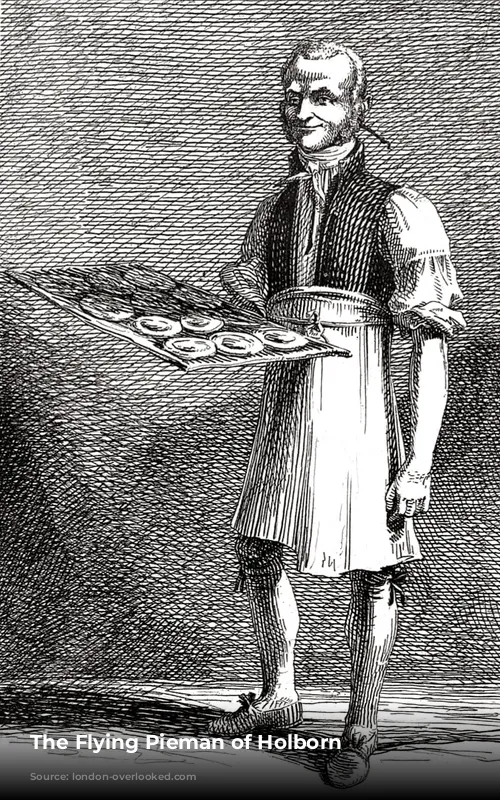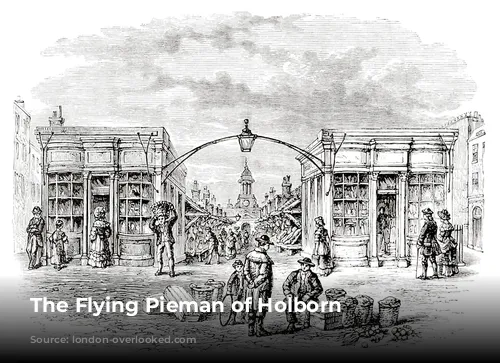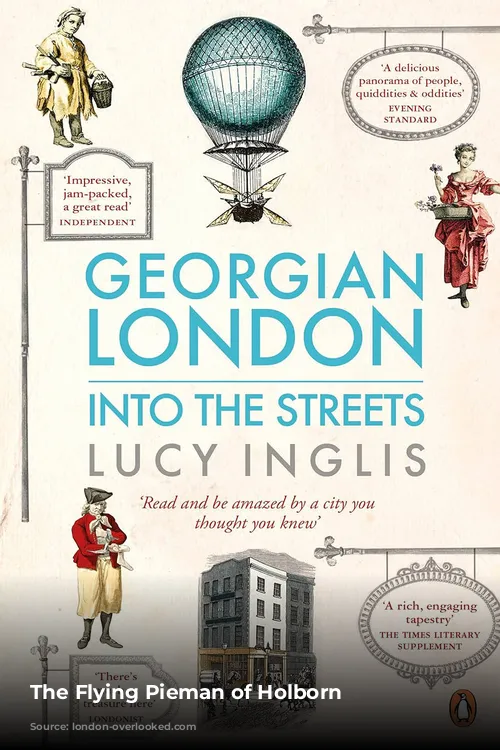Have you ever heard of a pieman who could fly? No, I’m not talking about some mystical story. I’m talking about a real person, a real pieman who lived in the bustling streets of Holborn, London, in the early 1800s. His name was Peter Stokes, and he was known as The Flying Pieman — a moniker that perfectly captured his unique style of selling steaming hot plum pudding.
Holborn, a vibrant and diverse area, attracted a colorful cast of characters, from skilled pickpockets to talented writers. It was a place where the wealthy and the poor collided, creating a unique blend of opulence and hardship. While some saw Holborn as a haven of opportunity, others saw it as a place of struggle, a reality reflected in the writings of the era.
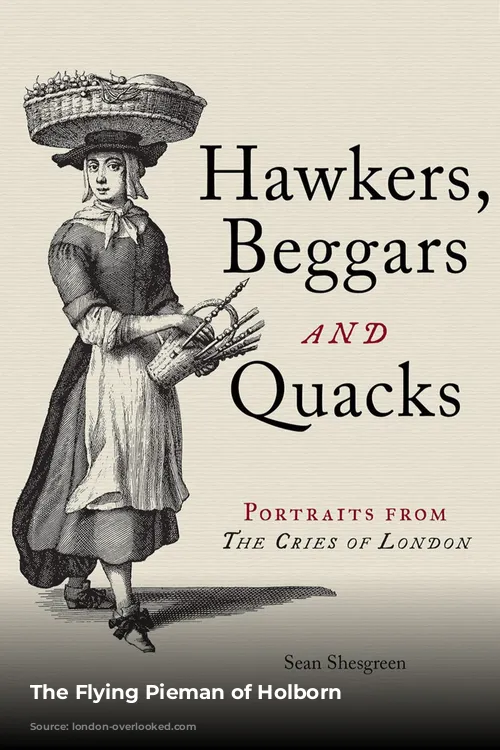
The Legend of The Flying Pieman
Peter Stokes wasn’t just any ordinary pieman; he was a spectacle. Imagine this: a slim, dapper man, always impeccably dressed in a black suit, with a powdered wig, a spotless white cravat, and a delicate apron, dashing through the crowded streets of Holborn, a tray of plum pudding in one hand and a spatula in the other. He was a whirlwind of activity, zipping from one street to another, stopping only to hand over a slice of pudding to eager customers.
Stokes’s secret to success? Speed. He could sell twelve slices of pudding in a flash, moving from Hatton Garden to Fleet Market with astonishing swiftness. His tireless energy and unwavering dedication were legendary, as he tirelessly hawked his wares from noon to four in the afternoon, his voice echoing through the streets with the simple yet effective cry, “Buy! Buy! Buy!” He was a true testament to the spirit of hustle and determination that defined London’s street vendors.
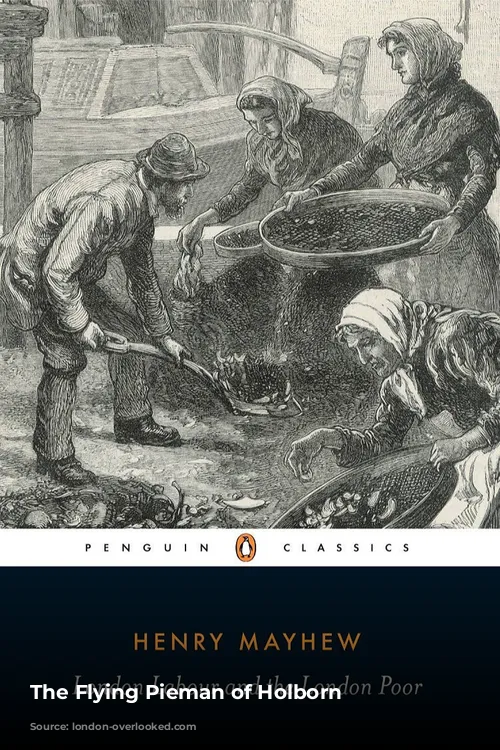
The Secret Sorrow of the Flying Pieman
But behind the energetic facade of the Flying Pieman, a different story lay hidden. Stokes’s life was not simply about the thrill of the chase. He had a secret passion — a passion for art. He dreamt of being a portrait painter, of capturing the essence of people on canvas. His heart yearned for the freedom and recognition that came with artistic expression. However, life had other plans for him, forcing him to embrace a different path.
Stokes’s story is one of both success and struggle. He achieved financial security through his unique pie-selling style, providing for his wife and children in a way he had never imagined. His family even enjoyed a level of prosperity they had never known, a testament to his hard work and dedication. However, a hint of sadness always seemed to linger in his eyes, a reminder of the artistic dream he had left behind.

The Rise and Fall of the Street Pieman
The Flying Pieman’s story is not just about one man; it’s also a snapshot of a changing era. The rise of fast-food establishments posed a challenge to the traditional street vendor, offering cheaper and more convenient alternatives. The once-thriving street pie trade faced stiff competition, with many vendors struggling to stay afloat.
These fast-food shops, known as penny pie-shops, were not without their own set of issues. They were often accused of using inferior ingredients and using pepper to mask the poor quality of their fillings. However, the street piemen themselves weren’t always seen as trustworthy. They were often associated with dubious practices, like coin-tossing games that targeted unsuspecting children.
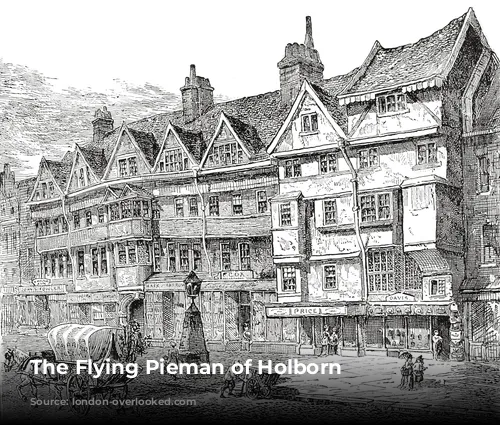
A Legacy of Resilience and Dreams
Peter Stokes’s story reminds us that success can take many forms. His journey from a struggling artist to a beloved pieman, though not without its challenges, allowed him to build a comfortable life for his family. He may not have achieved his original dream of becoming a renowned painter, but his life was far from ordinary. He was an icon of Holborn, a symbol of resilience and the unwavering pursuit of a better life. His story is a reminder that even when life throws unexpected curves, it is possible to find joy and success in the most unexpected places.
